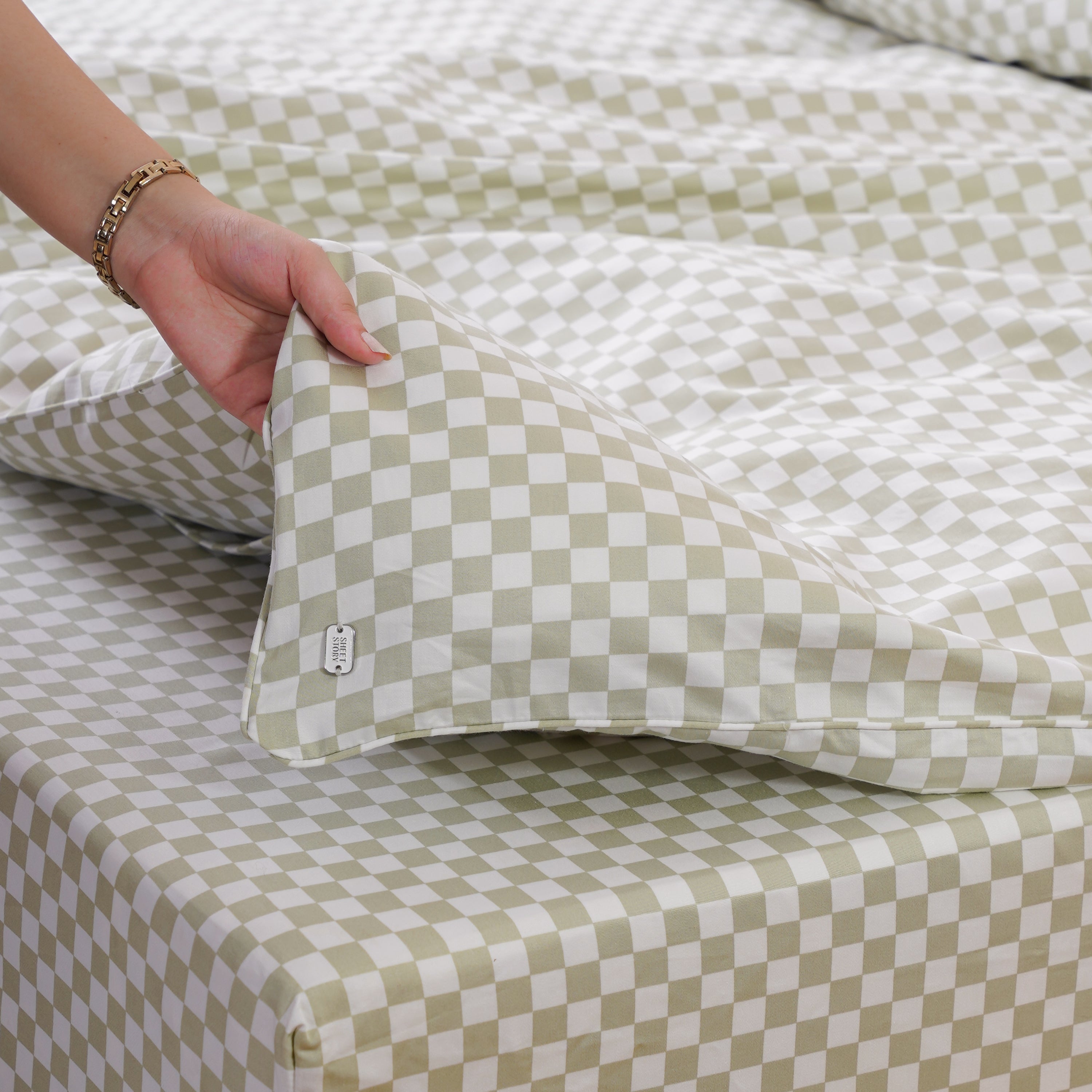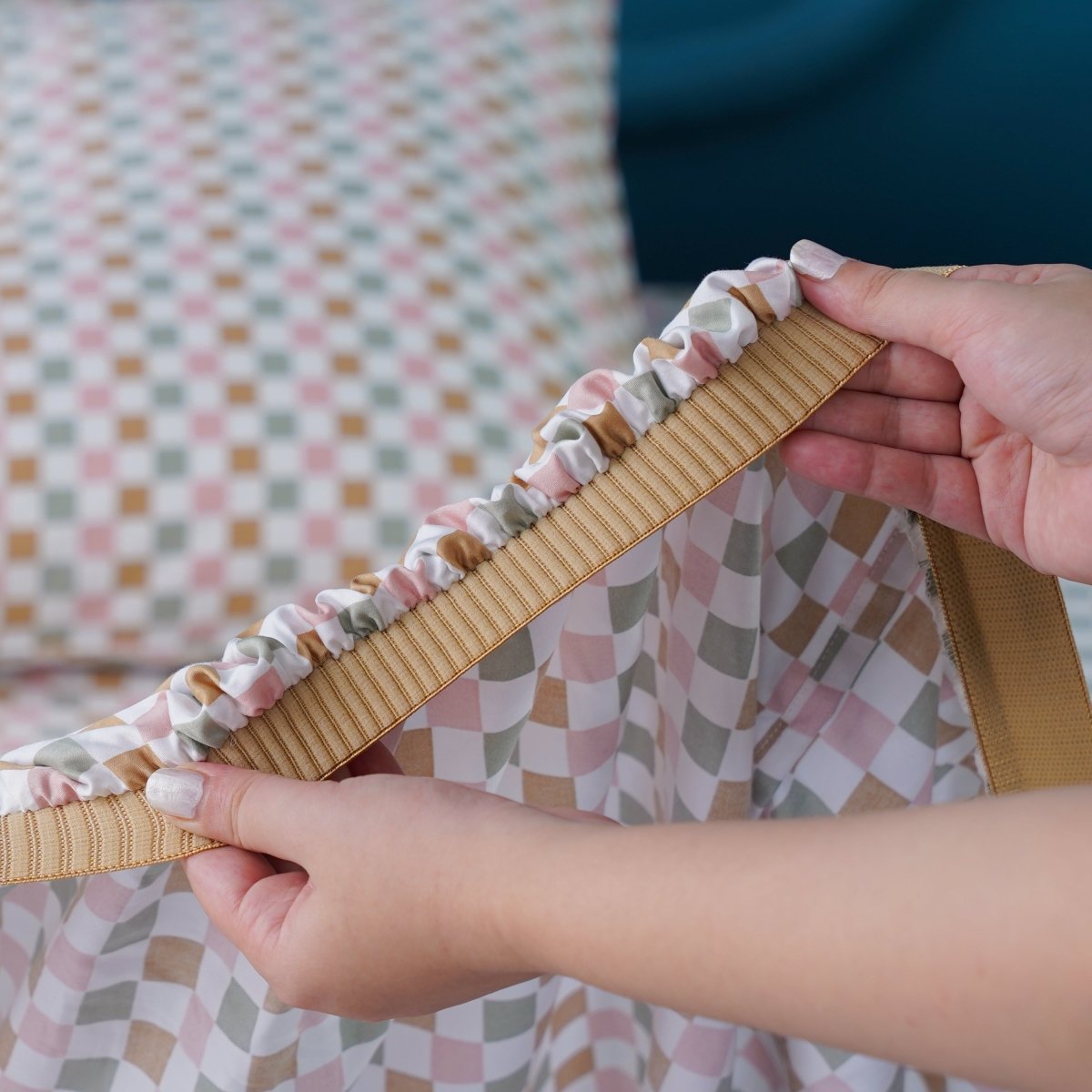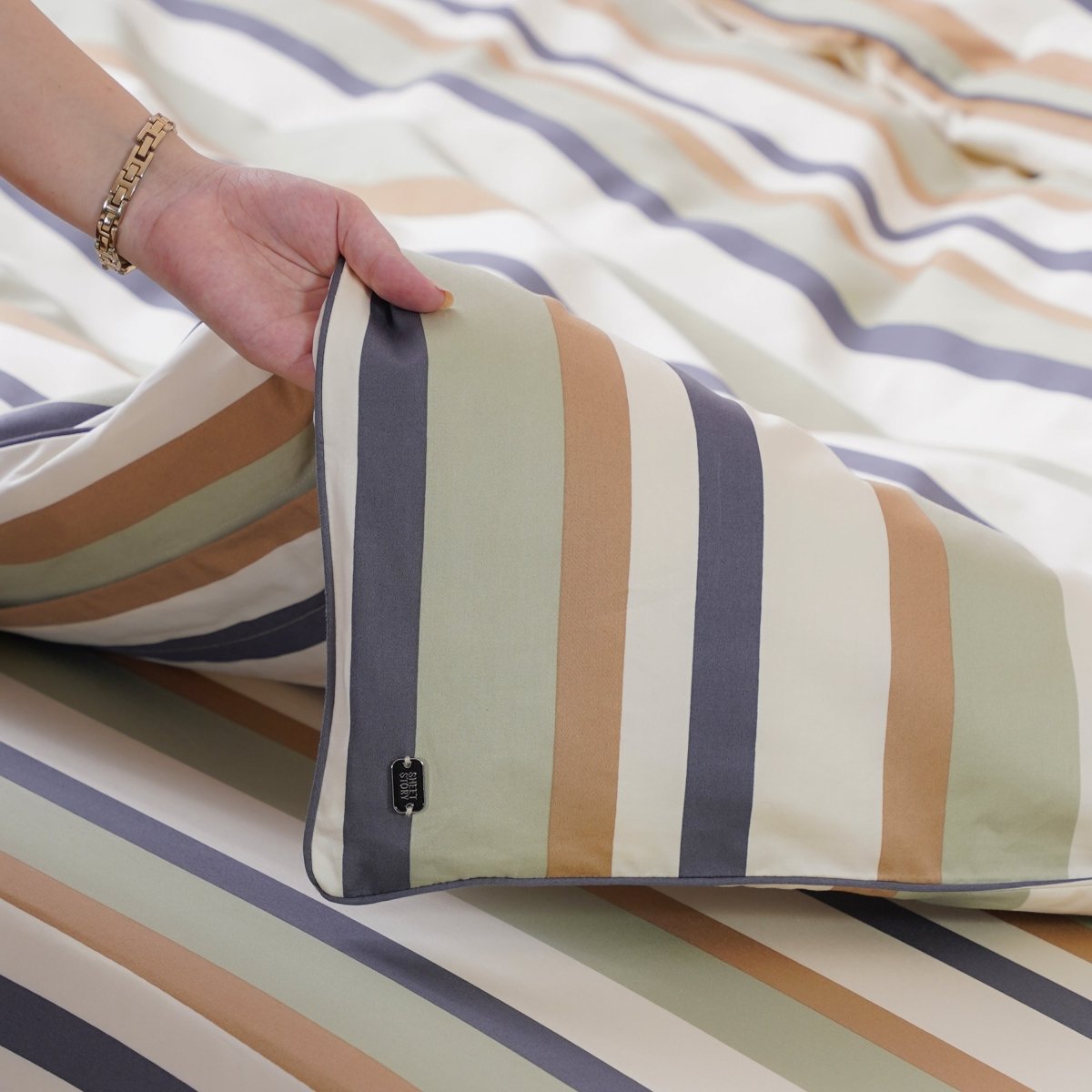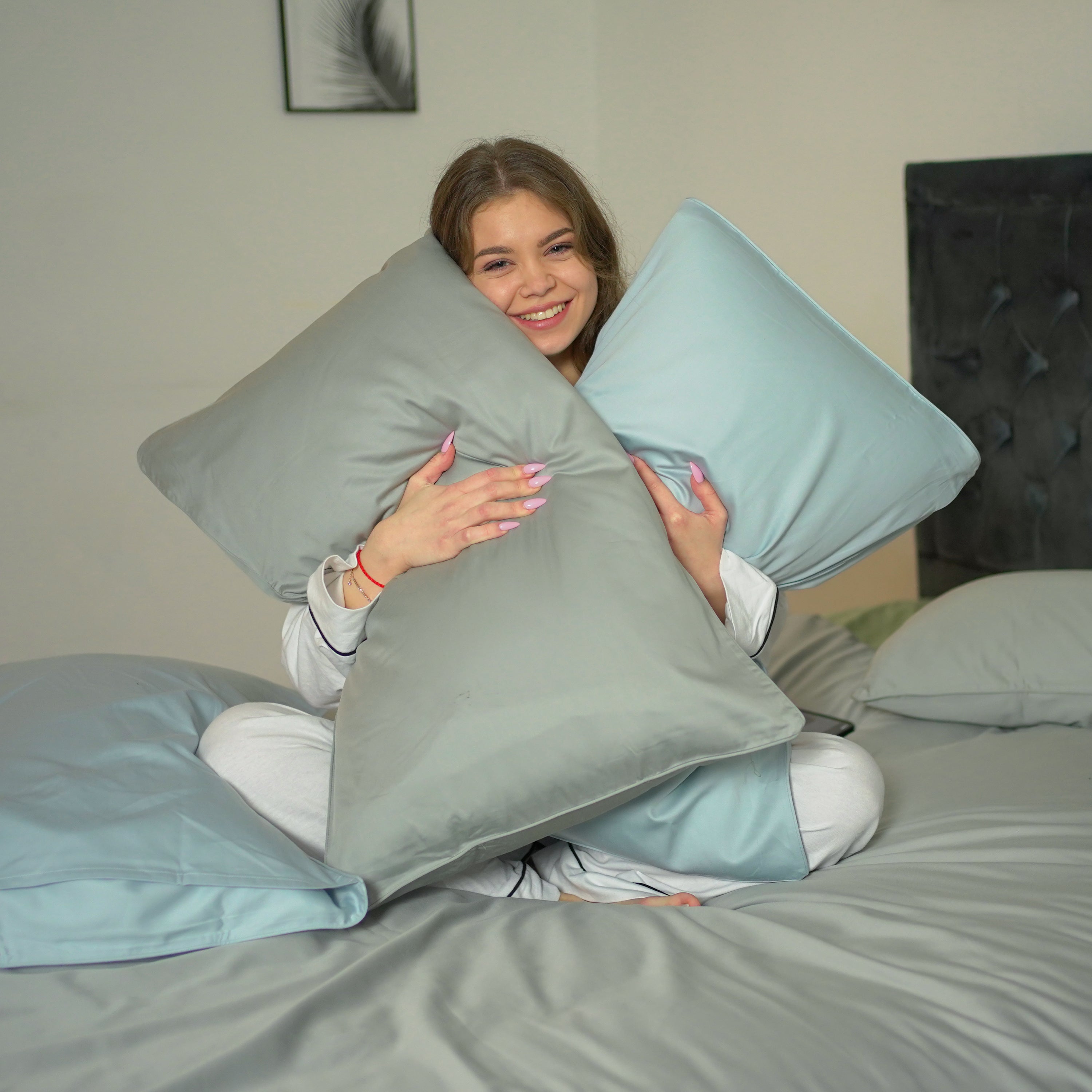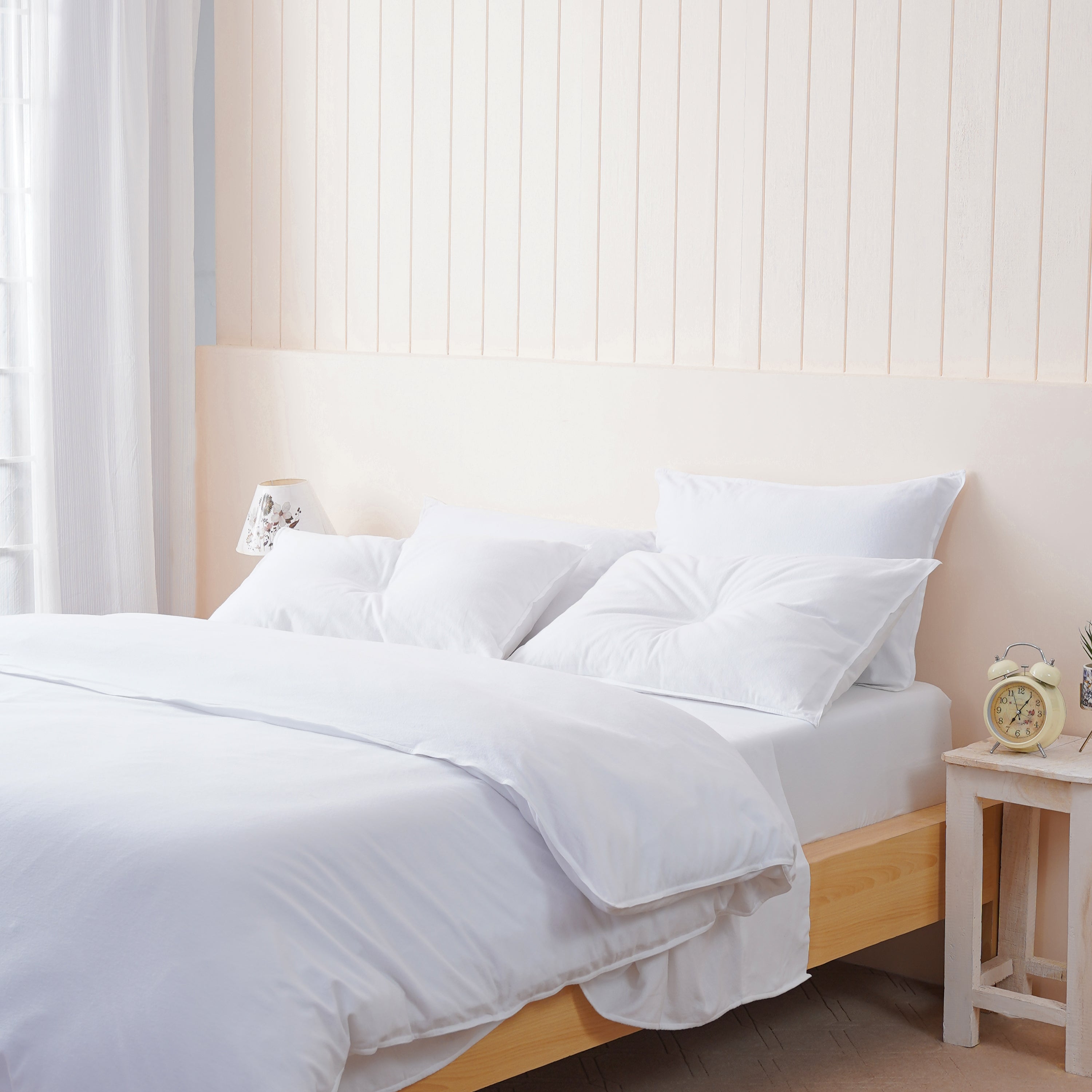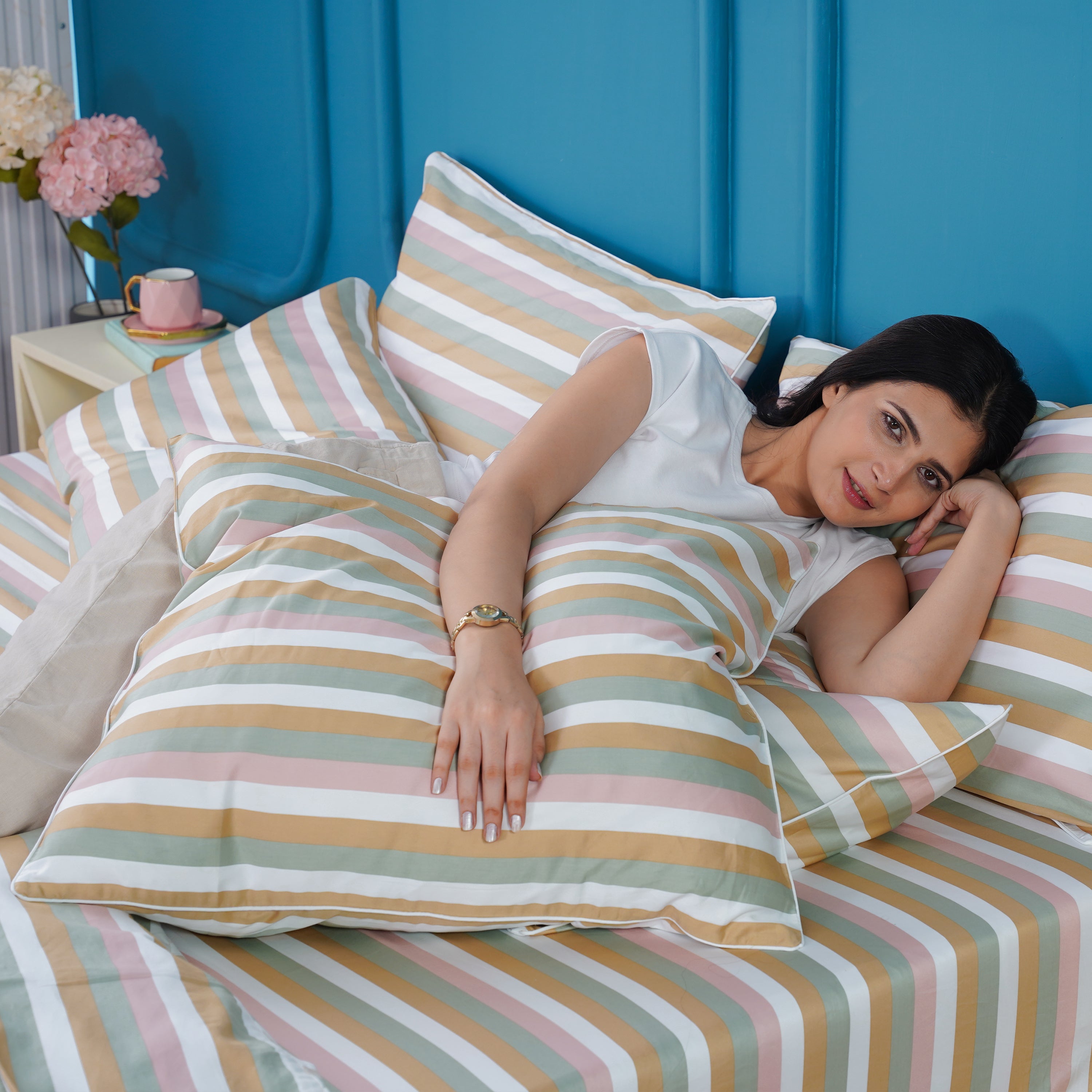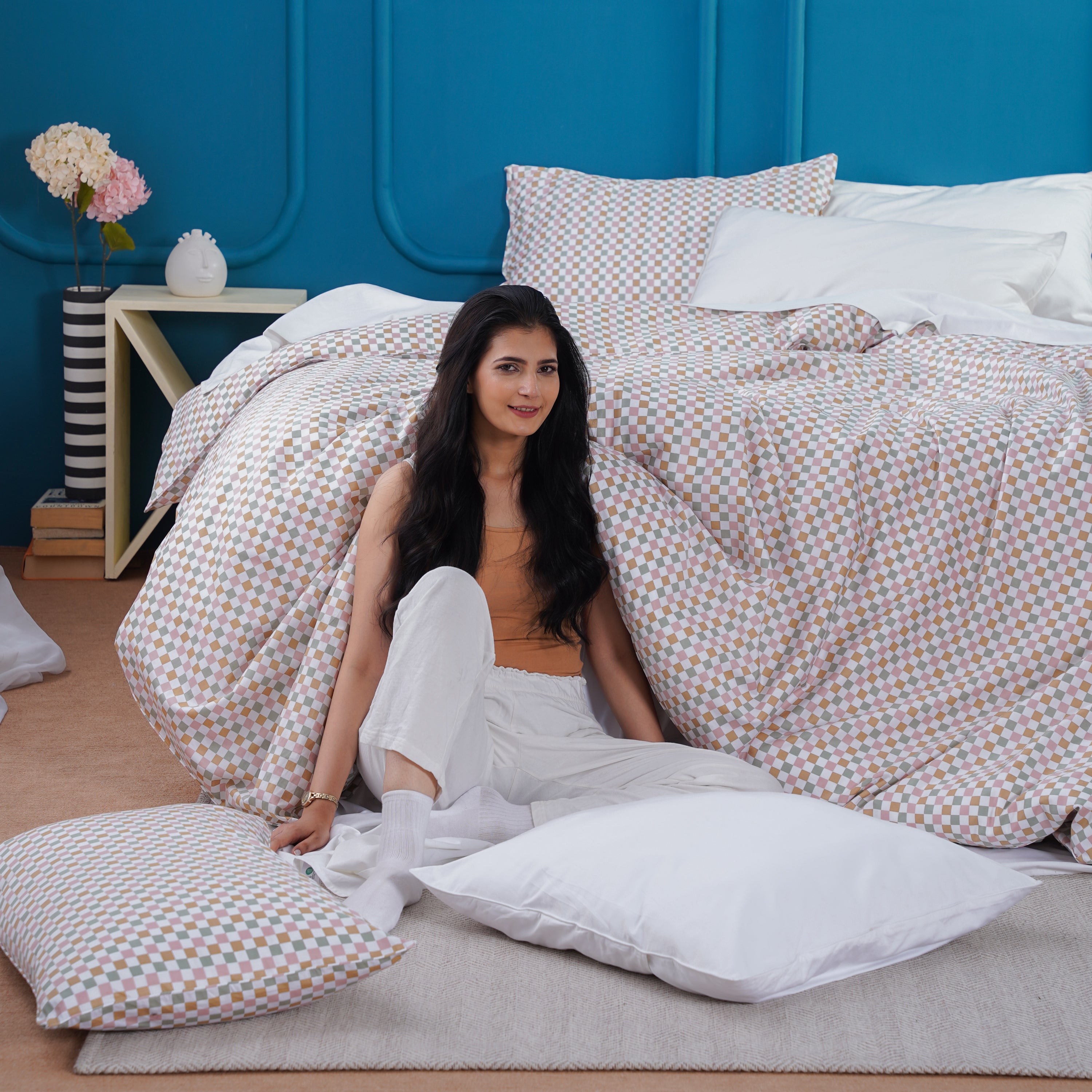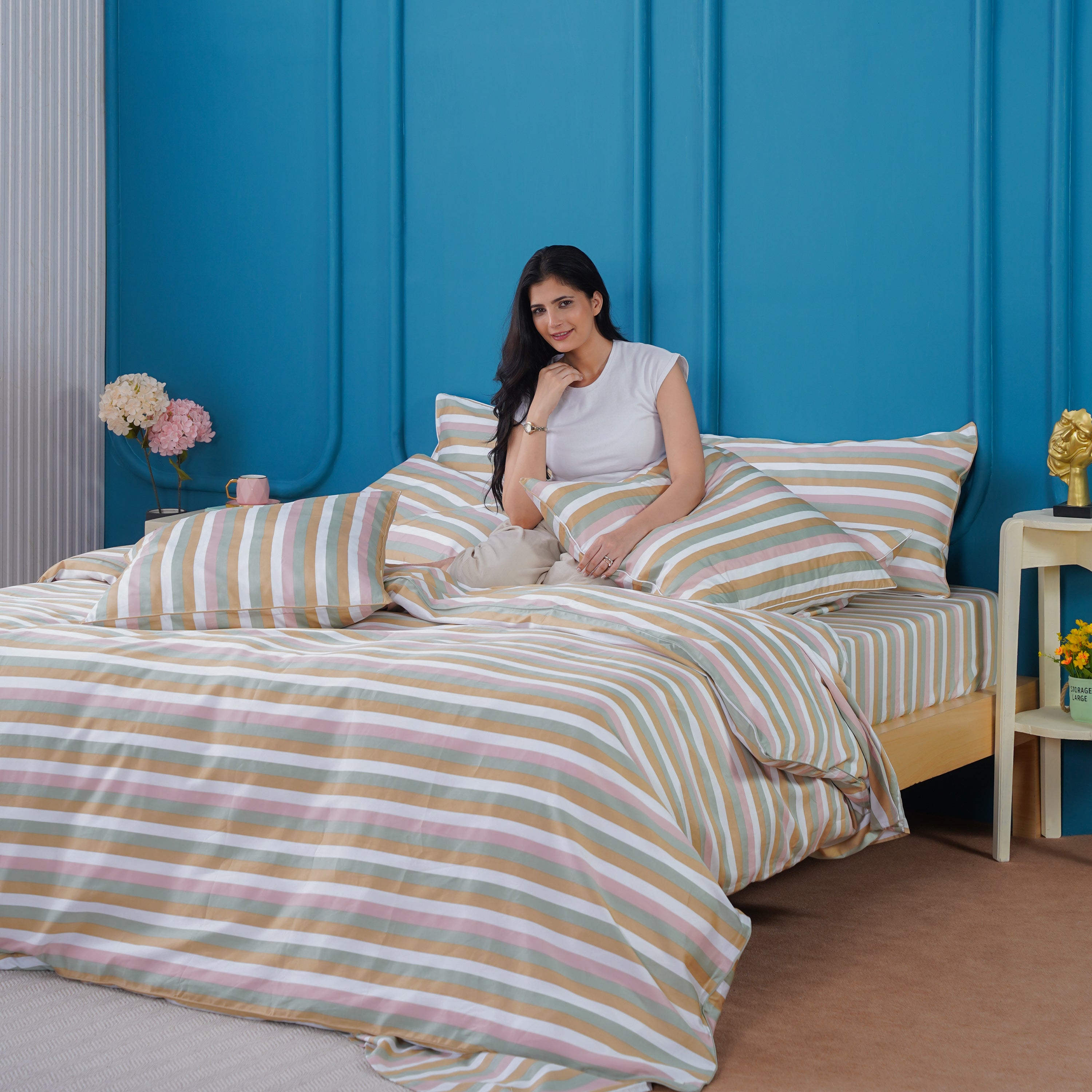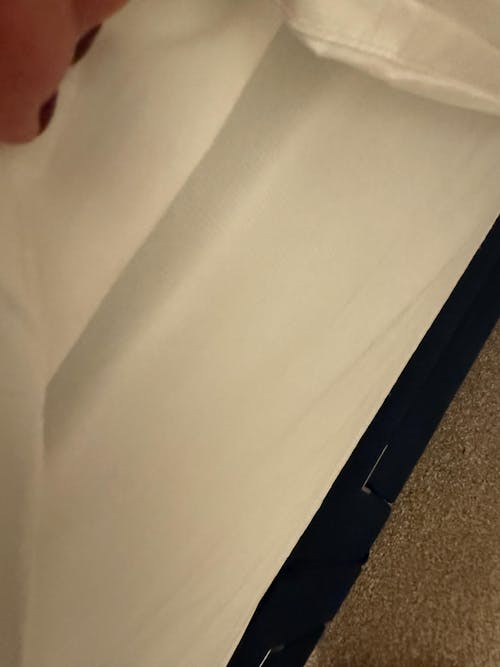Night sweats can significantly disrupt your rest, leaving you tossing, turning, and waking up damp and uncomfortable. If you regularly overheat at night, your choice of bedding may be more to blame than your room temperature. Breathable fabrics offer a game-changing solution—designed to wick moisture, regulate temperature, and keep you comfortably cool throughout the night.
In this guide, we explore how breathable bedding can help prevent night sweats and offer practical hot sleeper solutions that don’t compromise on comfort or style.
1. Understanding Night Sweats: Why Fabric Matters
Night sweats are more than a mild inconvenience—they can be a sign your sleep environment isn’t supporting your body’s natural thermoregulation. Traditional synthetic bedding materials, such as polyester or microfiber, often trap heat and moisture against the skin. The result? Overheating, disrupted sleep cycles, and sheets that feel clammy by morning.
Breathable fabrics like bamboo, organic cotton, and linen allow for increased airflow and moisture evaporation, making them ideal for bedding for night sweats.
2. Bamboo Bedding: The Star of Hot Sleeper Solutions
Bamboo has gained significant popularity in recent years—and for good reason. Bamboo fibres are naturally moisture-wicking, antimicrobial, and highly breathable, making them one of the best materials for regulating body temperature at night.
Bamboo bedding adapts to your body heat, staying cool in summer and warm in winter. Its silky smooth texture also makes it ideal for sensitive skin, providing both comfort and functionality.
Hot Sleeper Tip: Look for 100% bamboo viscose or lyocell to ensure you’re getting the maximum breathability benefit, not a polyester blend.
3. Organic Cotton: Timeless, Soft, and Breathable
Organic cotton is another excellent option for those prone to overheating. Unlike conventional cotton, organic varieties are grown without harmful chemicals, making them safer for both your skin and the environment.
Cotton’s natural breathability comes from its loose weave and moisture-absorbing properties. It allows air to circulate while drawing sweat away from the body, helping you stay dry and comfortable.
Pair organic cotton sheets with a lightweight duvet or comforter filled with wool or down alternatives to further enhance your sleep setup.
4. Linen: Textured Elegance with Superior Airflow
Linen bedding, made from flax fibres, offers a more textured feel with unparalleled airflow. Its open weave structure makes it one of the most breathable materials on the market, ideal for those who sleep hot year-round.
Linen is also highly durable and softens with each wash, providing a long-term bedding solution that only improves over time. Though it may feel crisper than cotton or bamboo at first, its unique ability to regulate temperature and moisture is unmatched.
5. Choosing the Right Weave and Weight
Fabric choice is crucial, but the weave and weight of your bedding also play a significant role in breathability. Here are a few pointers:
-
Percale weave: Crisp and cool with a matte finish; perfect for hot sleepers.
-
Sateen weave: Slightly heavier and more lustrous; still breathable but warmer than percale.
-
Jersey knit: Stretchy and soft but retains heat, so best avoided for night sweat sufferers.
Always opt for lighter-weight materials in breathable bedding. Heavier fabrics, even in natural fibres, can impede airflow and trap heat.
6. Moisture-Wicking Mattress Protectors and Pillowcases
Don’t forget about your mattress and pillows. Many memory foam mattresses retain heat, so pairing them with moisture-wicking mattress protectors and breathable pillowcases can significantly improve airflow and reduce overheating.
Look for covers made from bamboo or Tencel, another plant-based fibre known for its cooling properties.
Bedding for Night Sweats Tip: Layering is key. Light, breathable layers allow you to adjust your sleep environment as needed throughout the night.
7. Laundering Tips for Maintaining Breathability
To preserve the performance of breathable fabrics, it’s important to wash and care for them properly:
-
Use mild, eco-friendly detergents.
-
Avoid fabric softeners, which can coat fibres and reduce moisture-wicking abilities.
-
Line-dry when possible to maintain the integrity of the fabric.
Regular washing also prevents the build-up of oils and sweat that can impact fabric breathability.
8. Aesthetics Meet Function: Styling for Breathable Comfort
Function doesn’t have to compromise aesthetics. Breathable bedding is now available in a wide range of colour palettes, textures, and luxury finishes. Soft neutrals, minimalist whites, and muted earth tones not only soothe the senses but also reflect heat better than darker colours.
Complement your breathable bedding with lightweight throws, sheer curtains, and natural fibre rugs to create a calming, cohesive space that enhances airflow and visual comfort.
Final Thoughts
Investing in breathable bedding isn’t just a luxury—it’s a necessity for those who struggle with night sweats or sleep hot year-round. Whether you opt for silky bamboo sheets, soft organic cotton, or airy linen, the right fabrics can transform your nights from restless to restorative.
As you explore bedding for night sweats, remember that the best hot sleeper solutions combine temperature regulation, moisture-wicking, and design elegance. Your perfect sleep sanctuary is just a few breathable layers away.
